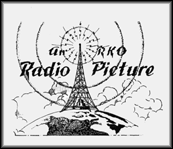Before you start listing your favorite horror-comedies of recent years — like Slither and Shaun of the Dead and Planet Terror and The Host and, casting back to 1996, The Frighteners — let's look at the actual broad trends in the industry.

Consider US theatrical releases listed in the IMDb. Take the fraction of all movies that are tagged as horror and call it the Lugosi index. Now take the fraction of all horror movies that are also tagged as comedy and call it the Raimi index. Express each index as a percentage. So for example, the figure above indicates that in the mid-90s about 5% of US theatrical releases were horror movies, and of those about 18% were horror-comedies. Data is averaged over 5-year intervals, e.g. 1994-1998, 1999-2003, etc.
The Lugosi shows the history of the relative popularity of horror movies in the US, which, as discussed previously, became a significant genre in the 30s and grew through the war years before tanking in the sci-fi craze of the early 50s. Horror steadily claimed an increasing share of the market over the next thirty years, peaking in the mid-80s before horror in general and comedic horror in particular took an unprecedented dive under the Clinton administration.
The Raimi demonstrates that horror was getting funnier through to the end of the 60s, when something rather sobering occurred. A uniquely American horror cinema emerged for the first time; not merely an import of Old World folklore, nor technophobic Cold War sci-fi-horror, but a bleak and grisly new vision of the American landscape. Night of the Living Dead (1968) was the harbinger and The Last House on the Left (1972) and The Texas Chain Saw Massacre (1974) are the exemplars. It was the 70s, Vietnam and Nixon, and shit got real serious.
Until that rusty chainsaw was snatched up by a certain steamroller-chinned S-Mart employee, housewares. Goofball gutsplatter more than doubled its share of the horror genre in the next few years and became a major influence on the 80s horror heyday; even the Freddy-Jason slasher franchises became sillier, more laugh-driven as time went on. (The Halloween series maintained a little more discipline.)
Then, like a machete through a nylon nookie-tent, struck the No Fun Nineties. Looking back...Jesus, we were uptight under that Arkansan huckster. I mean, the 80s were totally ridiculous (can anyone not cringe at what they were wearing?), but although I would still trade hair metal for grunge any day, at least we had Gremlins and Ghostbusters and Pee-Wee and Ferris Bueller and Marty McFly and Roger Rabbit and Goonies and some other Spielberg-Hughes-Zemeckis nonsense every week. The fact is that in 1980 America elected a clown who had once co-starred with a chimp named Bonzo, which sent a clear message: Anything goes, cowboy! I didn't always think so, but now I'm pretty sure it was the best decade ever to be a kid.
Comedy Central will sometimes rerun a block of stand-up from the 90s: Notice that every routine is a rant about political correctness. That damn buzzword was eventually dragged to hell, thank the Maker, but the superjaded zeitgeist of detachment and self-conscious irony persisted for nearly a decade. No room for the childlike fancy and fear that is the basic stuff of spook stories. Both Sam Raimi and Peter Jackson went respectable. No Fun. The horror genre only survived at all by becoming ironic, with Scream (1996) and its ilk.
Comedic horror continued to bleed from the throat during the Iraq war, but horror in general began a hopeful comeback thanks to a cruel revival of the gritty 70s aesthetic (torture porn, pathetic remakes).
Drag Me To Hell is Raimi working in the same sincere, unaffected, classical vein as latter-day Clint Eastwood. It's Tom & Jerry thinly disguised for grown-ups; the hideous horror hag is literally clobbered by an inexplicable anvil. No one else would dare to be so disarmingly guileless.
* Within the Woods (1978), The Evil Dead (1981), Evil Dead II (1987), Army of Darkness (1993). Word on the street is that Raimi and Campbell are pushing another Evil Dead sequel/remake for 2010.

I like the comedy/horror flicks because they're usually smarter than the pure horror ones. It's so easy to make a bad horror flick that will pay for itself at the box office, but to pull off comedy/horror requires more care. Ironic horror is fun, too, but is best done by the masters of the genre (e.g. Wes Craven).
ReplyDeleteYou should have used a moving average intstead of a fixed one.
ReplyDeleteBut yes, I completely agree with the point (and I hope I can see DMtH this weekend).
It's the Age of Irony, my friend. Northrup Frye predicted this in the 1960's.
ReplyDelete